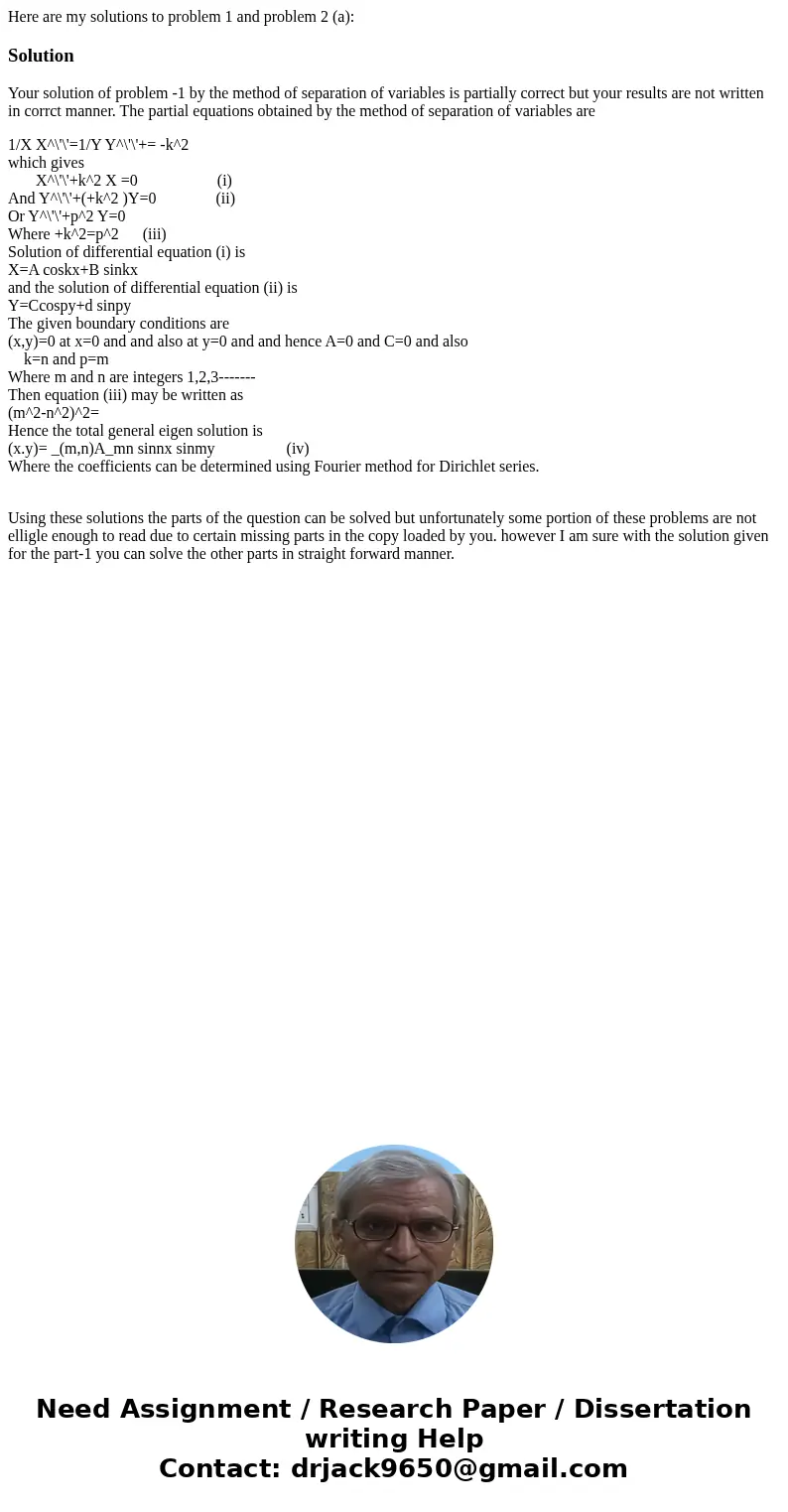Here are my solutions to problem 1 and problem 2 aSolutionYo
Here are my solutions to problem 1 and problem 2 (a):
Solution
Your solution of problem -1 by the method of separation of variables is partially correct but your results are not written in corrct manner. The partial equations obtained by the method of separation of variables are
1/X X^\'\'=1/Y Y^\'\'+= -k^2
which gives
X^\'\'+k^2 X =0 (i)
And Y^\'\'+(+k^2 )Y=0 (ii)
Or Y^\'\'+p^2 Y=0
Where +k^2=p^2 (iii)
Solution of differential equation (i) is
X=A coskx+B sinkx
and the solution of differential equation (ii) is
Y=Ccospy+d sinpy
The given boundary conditions are
(x,y)=0 at x=0 and and also at y=0 and and hence A=0 and C=0 and also
k=n and p=m
Where m and n are integers 1,2,3-------
Then equation (iii) may be written as
(m^2-n^2)^2=
Hence the total general eigen solution is
(x.y)= _(m,n)A_mn sinnx sinmy (iv)
Where the coefficients can be determined using Fourier method for Dirichlet series.
Using these solutions the parts of the question can be solved but unfortunately some portion of these problems are not elligle enough to read due to certain missing parts in the copy loaded by you. however I am sure with the solution given for the part-1 you can solve the other parts in straight forward manner.

 Homework Sourse
Homework Sourse